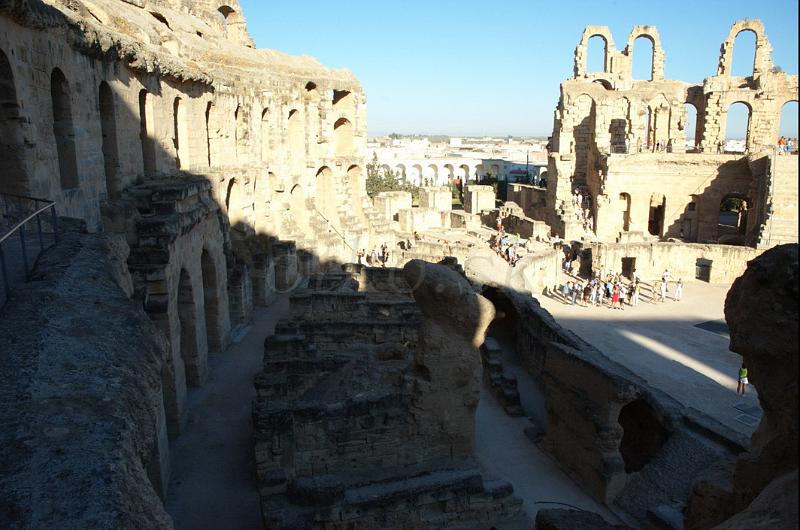|
 |
| El Djem (Latin Thysdrus) is a town in Mahdia Governorate, Tunisia. It is home to some of the most impressive Roman remains in Africa. El Djem is famous for its amphitheatre (often incorrectly called "a coliseum"), capable of seating 35,000 spectators. Only Rome's Colosseum (about 45,000 spectators) and the ruined theatre of Capua are larger. The amphitheatre at El Djem was built by the Romans under proconsul Gordian, who was acclaimed Emperor at Thysdrus, around 238 and was probably mainly used for gladiator shows and chariot races (like in Ben-Hur). It is also possible that construction of the amphitheatre was never finished. Until the 17th century it remained more or less whole. From then on its stones were used for building the nearby village of El Djem and transported to the Great Mosque in Kairouan, and at a tense moment during struggles with the Ottomans, the Turks used cannons to flush rebels out of the amphitheatre. The ruins of the amphitheatre were declared a World Heritage Site in 1979. |
| Total images: 120 | Help |